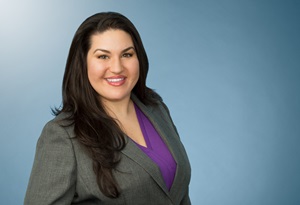NLRB Declines Jurisdiction Over Northwestern Football Players — Punts to NCAA to Address Athletes' Grievances
On January 28, 2014, student-athlete members of the Northwestern University football team filed a representation petition with the National Labor Relations Board (NLRB) asserting they are “employees” of the university entitled to representation by a union for purposes of collective bargaining. Two months later, the Regional Director for NLRB Region 13 ruled in favor of the players, finding that the degree of control the university exerted over them, along with the significant economic benefits they provided to the school they played (or “worked”) for, sufficed to establish that they were “employees” under Section 2(3) of the National Labor Relations Act (NLRA). Our March legal update, “NLRB Rules That Northwestern Football Players Are Employees and Can Unionize,” provides more details on the Regional Director’s decision. However, Northwestern appealed the Regional Director’s decision to the full five-member Board, and the players’ ballots were impounded. Other private academic institutions that could be affected by the decision (including Boston College and Notre Dame; state institutions are excluded from the NLRA), joined to write amici briefs hoping to persuade the full Board to reverse the Regional Director’s decision.
On August 17, 2015, 16 months after Northwestern initiated its appeal, the NLRB issued its long-awaited ruling. Notably, the NLRB did not determine whether the players are “statutory employees” under the NLRA. Instead, it punted on that issue and declined to exercise jurisdiction over the dispute on the grounds that “doing so would not effectuate the purposes of the Act.” The NLRB’s unanimous decision was “primarily premised” on a finding that it “would not promote stability in labor relations” if the NLRB exercised jurisdiction because of: (1) the nature of sports leagues (specifically, the degree of control exercised by the leagues over individual teams); and (2) the composition of the NCAA Division I Football Bowl Subdivision (in which the majority of teams are public colleges and universities over which the NLRB cannot assert jurisdiction).
With regard to the nature of the league, the NLRB noted that the players sought union representation to address grievances such as the availability of stipends to cover living expenses, health insurance coverage for sports-related injuries, their inability to profit from the use of their names or likenesses, and the denial of any opportunity to share in the millions of dollars in revenue generated from the football program — all of which are issues controlled in large part (if not entirely) by the NCAA. In addition, each school and its players are subject to not only NCAA and individual school policies, but also to “Big Ten” regulations and other conference-specific regulations. Accordingly, even if student-athletes unionized, their “employers” (the academic institutions) would not be in a position to bargain over many of the essential terms and conditions of the players’ purported employment.
The NLRB also noted that to have one bargaining unit comprised solely of one team, as opposed to league-wide representation (similar to the league-wide bargaining units in professional sports), could undermine the common rules and standards governing competition, which are in place to level the playing field among the various institutions. Since this effort to create uniformity and level the playing field is the very reason “academic institutions that sponsor intercollegiate athletics have banned together and formed the NCAA” and given it the authority to police and enforce the rules and regulations that govern eligibility, practice and competition, the NLRB determined that allowing only a small minority of the teams under the NCAA’s purview to unionize would improperly disrupt this uniformity (and therefore would not effectuate the purposes of the NLRA).
With regard to the composition of NCAA Division I, the NLRB noted that only 17 of the roughly 125 colleges and universities playing at that level are private institutions, and only one of the 14 teams in the Big Ten (Northwestern) is private. Accordingly, “the overwhelming majority of competitors are public colleges and universities over which the Board cannot assert jurisdiction.” The NLRB therefore reasoned that allowing players at private universities to unionize, while leaving players at public universities without the same right, would not promote stability in labor relations. In short, the NLRB noted no controlling authority requires it to exercise jurisdiction and simply held “it would not effectuate the policies of the Act to assert jurisdiction” in this case.
Importantly, the NLRB’s ruling leaves the door wide open for future organizing efforts by student-athletes, and the unions that supported the Northwestern students’ organizing efforts have already pledged their commitment to continuing the fight to unionize college players. However, academic institutions, athletic associations and amateur sports leagues have gained at least some insights into the NLRB’s stance and reasoning on this issue, and can apply that knowledge in their continued opposition to union organizing efforts.
The material contained in this communication is informational, general in nature and does not constitute legal advice. The material contained in this communication should not be relied upon or used without consulting a lawyer to consider your specific circumstances. This communication was published on the date specified and may not include any changes in the topics, laws, rules or regulations covered. Receipt of this communication does not establish an attorney-client relationship. In some jurisdictions, this communication may be considered attorney advertising.


